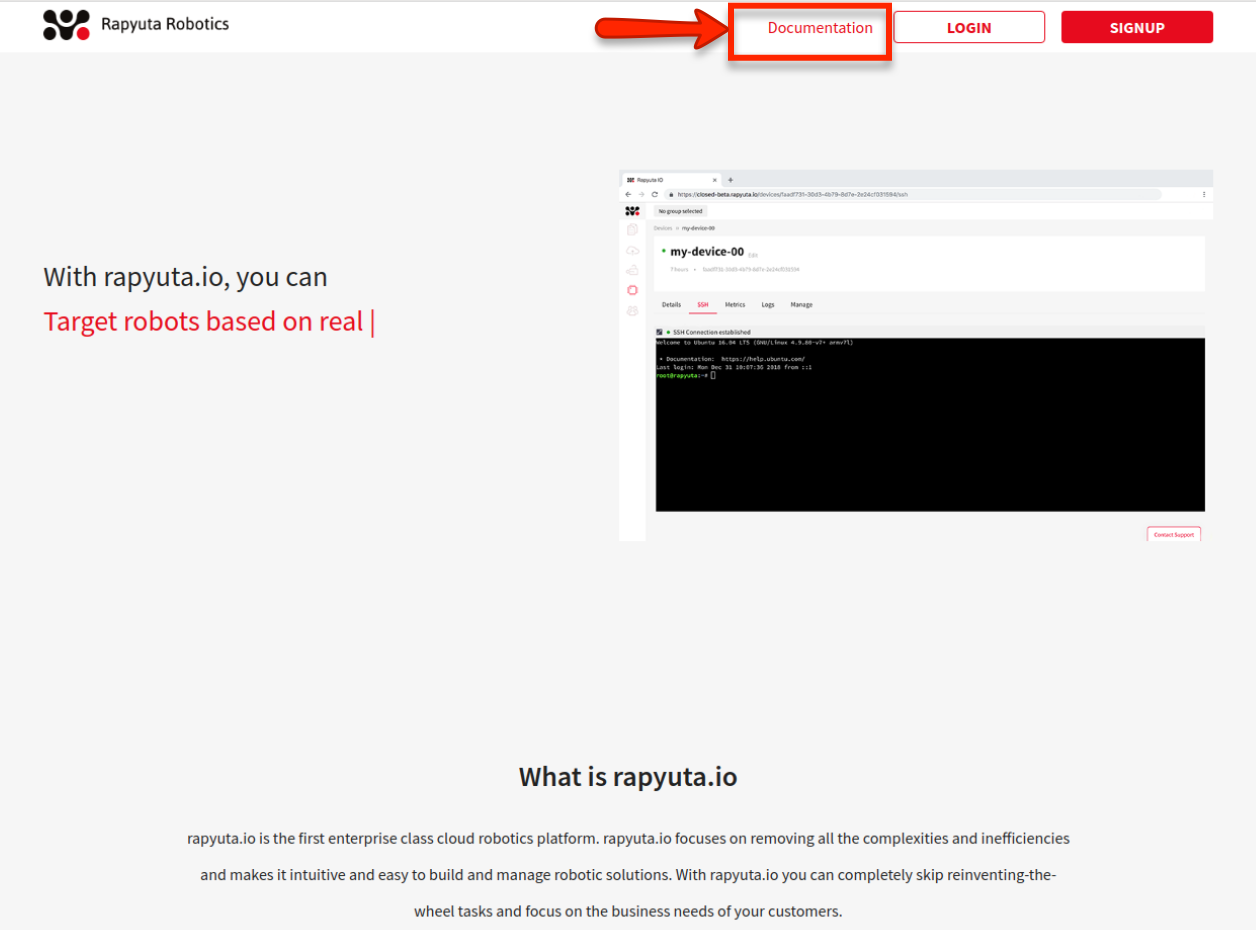In this article
Help us make these docs great!
All rapyuta.io docs are open source. See something that's wrong or unclear? Submit a pull request.
Make a contributionDecember
December 04
Welcome to the December 04, 2019 release of rapyuta.io platform (v0.35.0). There are significant updates in this version that we hope you will like.
Features
- Visualization of device onboarding stages
The process of onboarding a device is made up of different stages. A progress bar indicates the on-going and completed stages of the process. - Support timeout for ROS services
Set a timeout when adding a ROS service to a rapyuta.io package. It is the number of seconds to wait for a ROS service response before timing out.
Notable Fixes
- Fixed disappearing blinking dots indicating build status of a package.
- Improved the reliability of WebSSH. There will be lesser frequent disconnections.
- Fixed terminal resize issue of WebSSH.
Documentation
- Read about the different stages of the device initialization process.
- Added a new device failed error code: DEV_E108
December 11
Welcome to the December 11, 2019 release of rapyuta.io platform (v0.36.0). There are minor updates in this version that we hope you will like.
Notable Fixes
- Fixed the issue of redirecting to rapyuta.io dashboard on sign in every time the user signs out of rapyuta.io
Documentation
Open the user documentation from the home page of rapyuta.io

December 18
Welcome to the December 18, 2019 release of rapyuta.io Python SDK 0.10.0
Features
rapyuta.io Python SDK 0.10.0 released
- Added methods for interacting with configuration parameters
Use upload_configurations() and download_configurations() methods to upload and download configuration parameters using the SDK. - Added method for applying configuration parameters to devices
Use apply_parameters() method for applying configuration parameters to devices using the SDK.
December 24
Welcome to the December 24, 2019 release of rapyuta.io platform.
Feature
Access user-defined endpoints as environment variables
Access user-defined endpoints in a deployment of a rapyuta.io
package using environment variables via the deployment’s
shell access option.